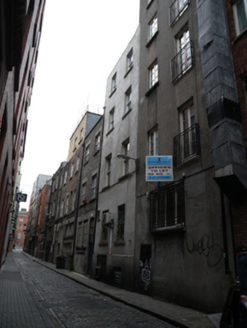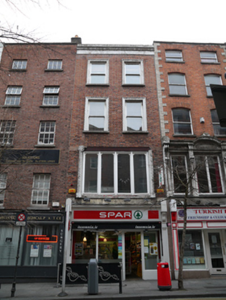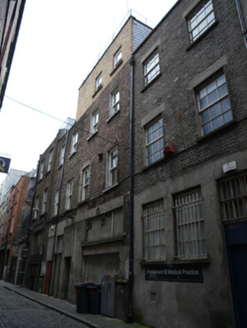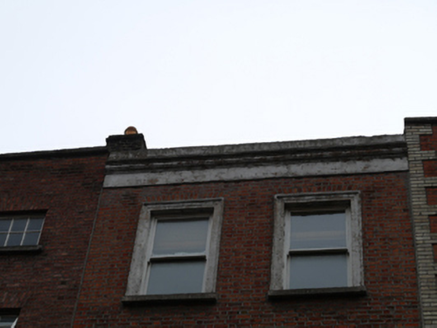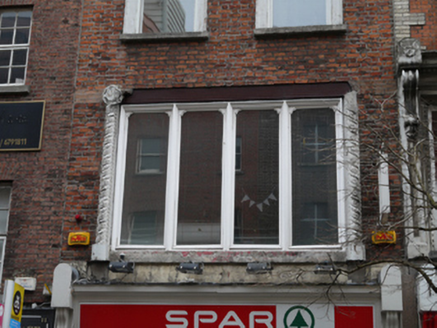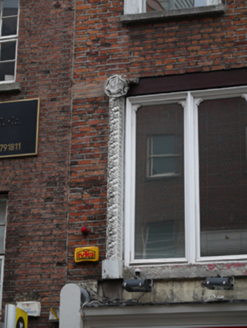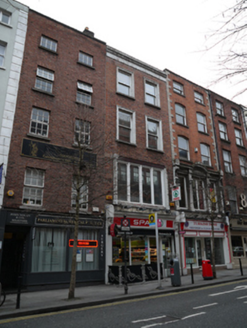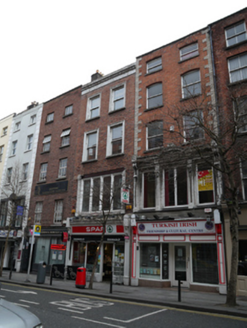Survey Data
Reg No
50020025
Rating
Regional
Categories of Special Interest
Architectural, Artistic
Original Use
House
Historical Use
Shop/retail outlet
In Use As
Shop/retail outlet
Date
1830 - 1850
Coordinates
315457, 234082
Date Recorded
28/02/2015
Date Updated
--/--/--
Description
Attached two-bay four-storey former house, built c.1840, having recent shopfront to front (west) elevation, and recent additional storey to rear (east) elevation. Hipped roof, set perpendicular to street, hidden behind masonry parapet with eaves course and moulded cornice, brown brick chimneystack having clay pots. Red brick walls laid in Flemish bond to front. Brown brick walls laid in Flemish bond to upper floors to rear, smooth rendered walls to ground floor to rear, with yellow brick wall to fourth floor extension. Square-headed window openings with cut granite sills, moulded masonry architraves to openings to second and third floors, and replacement windows. Square-headed window opening to first floor, having exposed steel lintel to head, painted masonry sill, moulded floral and rope decoration to surrounds, with timber mullions to square-headed shouldered panes. Square-headed window and door openings to recent shopfront. Situated on east side and centre of Parliament Street. Rear elevation is situated to west side and centre of Crane Lane.
Appraisal
Parliament Street is the first example of formal axial planning in mid eighteenth-century Dublin. George Semple designed the rebuilding of Essex Bridge (1753-55) and his plan showed a new wide street linking the bridge to Dublin Castle, this plan for Parliament Street was implemented by the Wide Street Commissioners in 1762. Many of the buildings, including this one, were altered and rebuilt in the nineteenth century. Along with some of its neighbouring buildings, the first floor window was given prominence with an ornate surround, indicating that the first floor was also in commercial use. The render window embellishments became fashionable in the nineteenth century, adding textural variation to the façade and demonstrating skilled artisanship.
